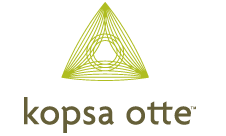Larry, thanks for the blog information. It is great. A while back you wrote an article in your newsletter about paying the kids during the summer. I have a teenager that is working in the salon and I can’t find the article. Could you send me a copy?
Amanda
Amanda, thanks for the question. I am sure that there are others that would be interested in this great tax planning technique. Things have changed a little since I posted the article so I will update.
If you are self-employed, employing your children (or grandchildren) can lower your family’s overall tax bill. By paying your child wages, you effectively shift income from a higher bracket taxpayer (you) to a lower bracket one (your child). Because the income is considered "earned income" to your child (as opposed to "unearned income" like dividends and interest), it can be offset by his or her standard deduction ($5,350 for 2007). To the extent the income is taxed, a low 10% rate will generally apply to all or part of it. Thus, the family’s income tax savings can be significant since some of the income normally taxed at your rate might escape taxes entirely or be taxed at your child’s low rate.
Amanda
Amanda, thanks for the question. I am sure that there are others that would be interested in this great tax planning technique. Things have changed a little since I posted the article so I will update.
If you are self-employed, employing your children (or grandchildren) can lower your family’s overall tax bill. By paying your child wages, you effectively shift income from a higher bracket taxpayer (you) to a lower bracket one (your child). Because the income is considered "earned income" to your child (as opposed to "unearned income" like dividends and interest), it can be offset by his or her standard deduction ($5,350 for 2007). To the extent the income is taxed, a low 10% rate will generally apply to all or part of it. Thus, the family’s income tax savings can be significant since some of the income normally taxed at your rate might escape taxes entirely or be taxed at your child’s low rate.
There can also be payroll tax savings when employing your child. Wages paid to a child under the age of 18 from a parent’s sole proprietorship are exempt from social security and unemployment taxes. Thus, depending on your total self-employment earnings, your tax savings can also include up to an additional 15.3% of the amount of wages you pay to your child, since you avoid paying self-employment tax on that amount and no payroll taxes are due on the wages.
Here is an example.
Suppose a business person operating as a sole proprietor is in the 35% tax bracket. He or she hires his 17-year-old daughter to help full-time during the summer and part-time into the fall. She earns $5,350 during the year (and doesn't have earnings from other sources).
The business person saves $1,872.50 (35% of $5,350) in income taxes at no tax cost to his daughter, who can use her $5,350 standard deduction for 2007 to completely shelter her earnings. The business person could save an additional $1,400 in taxes if he could keep his daughter on the payroll for a longer period and pay her an additional $4,000. She could shelter the additional amount from tax by making a tax-deductible contribution to her own IRA.
Employing your teenager has the side benefit of enabling him or her to make an IRA contribution. With earned income (received from your business or elsewhere), your child is eligible to make a 2007 contribution to a traditional or Roth IRA, up to the lesser of $4,000 or earned income. Generally, the Roth IRA is the better choice because although no deduction is allowed for the contribution, the earnings will never be taxed if your child does not withdraw them until at least age 59½. That’s a long time for the funds to grow. And if you choose, you can gift your child the funds to make the allowable contribution.
Before leaving this subject, it’s important to point out two things. First, you must make sure that any wages you pay your child are reasonable based on the work performed and the child’s age. Second, if your child is in college or is going to college soon, shifting income to him or her can have a detrimental impact on your family’s eligibility for need-based financial aid.
Please let me know if you need further information.


